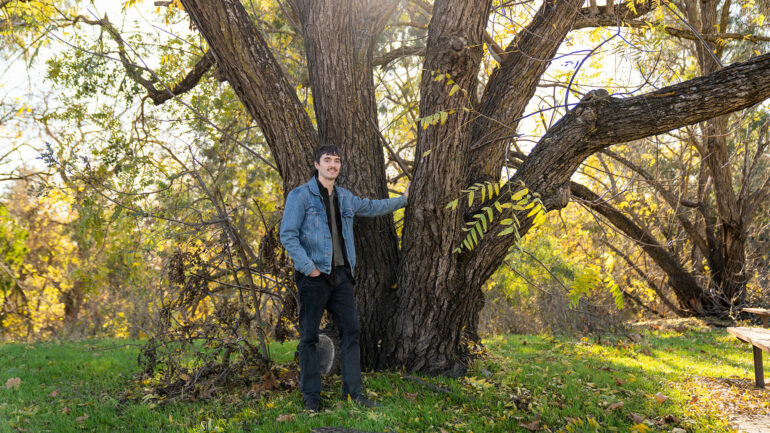The genetics behind the alternating sexes of walnut trees have been revealed by biologists at the University of California, Davis. The research, published in Science, reveals a mechanism that has been stable in walnuts and their ancestors going back 40 million years—and which has some parallels to sex determination in humans and other animals.
Flowering plants have many ways to avoid pollinating themselves. Some do this by structuring flowers to make self-pollination difficult; some species have separate “male” and “female” plants. Others separate their male and female flowers in time. Trees in the family that includes walnut, hickory and pecan take this one step further.
A walnut tree produces flowers of one sex, then the other in the same season, but trees differ in which one comes first. Individual trees are consistently “male-first” or “female-first” in flowering, something noted by Charles Darwin in 1877. In the 1980s, a UC Davis graduate student, Scott Gleeson, noted that this phenotype was controlled by a single genetic locus.
“Walnuts and pecans have a temporal dimorphism where they alternate male and female flowering through the season,” said Jeff Groh, graduate student in population biology at UC Davis and first author on the paper. “It’s been known since the 1800s but hasn’t been understood at the molecular level before.”
This occurs in both domesticated walnuts and wild relatives, like the Northern California black walnut. In wild species, the ratio of male-first to female-first trees is almost 1:1.
Groh and his doctoral advisor, Professor Graham Coop of the Department of Evolution and Ecology, made use of data from UC Davis’s walnut breeding program and also tracked flowering in native Northern California black walnut trees growing around the UC Davis campus. Assigning them to male-first or female-first groups, the researchers sequenced their genomes and identified sequences associated with the trait.
Same mechanism, different genes
In walnuts, they found two variants of a gene linked to female-first or male-first flowering. This DNA polymorphism appears in at least nine species of walnut and has been stable for almost 40 million years.
“It’s pretty atypical to maintain variation over such a long time,” Groh said. In this case, the two flowering types balance each other. If one flowering type becomes more common in the population than the other, the less common type gains a mating advantage, so it becomes more common. This pushes the system to a 50:50 equilibrium and maintains genetic variation.
Pecans, Groh found, also have a balanced genetic polymorphism determining flowering order, but in a different part of the genome than walnuts. The pecan polymorphism appears to be older than in walnut, at over 50 million years.
How did walnuts and pecans, which are related, arrive at the same flowering mechanism through quite different genes?
It could be that the ancestors of walnuts and pecans converged on similar solutions as they evolved. But it’s also possible that this time-separated flowering system appeared even longer ago in this family, about 70 million years ago, but over time the exact genetic mechanisms to achieve it have changed.
Intriguingly, this is similar to the way animal sex chromosomes work, with two structural variants (X and Y chromosomes in humans and other mammals) kept roughly in balance.
“There’s a clear parallel to a common mode of sex determination,” Groh said.
More information:
Jeffrey S. Groh et al, Ancient structural variants control sex-specific flowering time morphs in walnuts and hickories, Science (2025). DOI: 10.1126/science.ado5578
Citation:
Genetic mechanism of alternating sexes in walnut trees has some parallels to sex determination in humans (2025, January 2)



